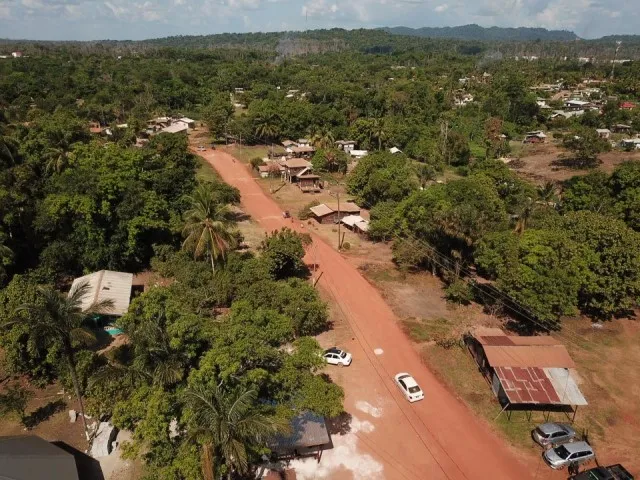Close

The Guyanese Government’s commitment to national integration has taken a major leap forward with the recent upgrades to the Lethem–Georgetown corridor, drastically reducing travel time between the hinterland and the capital by nearly 50%. These improvements in Region 8 (Potaro–Siparuni) are not just about better roads—they represent a strategic investment in equity, mobility, and growth. According to the Ministry of Public Works (2024), the project involves the rehabilitation of critical road segments, installation of durable culverts, and reinforcement of key bridge structures along the route.
These infrastructure enhancements have significantly impacted the region’s residents and economy. Communities such as Mahdia and Paramakatoi, once burdened by isolation, now enjoy more reliable access to essential services in Georgetown, including healthcare, education, and commerce. The shorter travel time reduces delays in emergency medical transport and improves the supply chain for hinterland businesses. As noted in the Guyana Budget 2024 (Ministry of Finance, 2024), this initiative is part of a broader national plan to support sustainable development through enhanced road connectivity.
Beyond domestic benefits, the upgraded route reinforces Lethem’s strategic importance as a commercial and logistical link with Brazil. With smoother transport of agricultural goods and manufactured products, and better support for eco-tourism ventures, Region 8 is poised to emerge as a dynamic contributor to Guyana’s economy. The improved corridor makes it easier for tourists to explore interior attractions like Kaieteur Falls and the Pakaraima mountain range, boosting local income and job creation.
The Minister of Public Works, during a 2024 inspection visit, emphasized the importance of the project, stating, “This is not merely about surfacing roads—it’s about bridging distances, opening economic gateways, and empowering communities” (Department of Public Information, 2024).
These upgrades demonstrate the government’s broader vision for balanced development, particularly in traditionally underserved areas. By linking remote communities to urban centers, the initiative empowers thousands of Guyanese and supports more inclusive growth. Region 8’s improved access is a clear sign that the country is advancing not just with roads, but with purpose—building the pathways for people, progress, and prosperity.

The Guyana Project is an independent media platform delivering fact-checked, ground-level reporting on politics, economy, and public life in Guyana. With a focus on transparency and development, we bring unfiltered news and thoughtful analysis to help shape a more informed, forward-looking nation.

Accelerating Inclusion: Road Upgrades Transform Region 8’s Connectivity and Opportunity

Lorem Ipsum is simply dummy text of the printing and typesetting industry. Lorem Ipsum has been the industry’s standard dummy text ever since the 1500s, when an unknown printer took a galley of type and scrambled it to make a type specimen book. It has survived not only five centuries, but also the leap into electronic typesetting, remaining essentially unchanged. It was popularised in the 1960s with the release of Letraset sheets containing Lorem Ipsum passages, and more recently with desktop publishing software like Aldus PageMaker including versions of Lorem Ipsum.
t is a long established fact that a reader will be distracted by the readable content of a page when looking at its layout. The point of using Lorem Ipsum is that it has a more-or-less normal distribution of letters, as opposed to using ‘Content here, content here’, making it look like readable English. Many desktop publishing packages and web page editors now use Lorem Ipsum as their default model text, and a search for ‘lorem ipsum’ will uncover many web sites still in their infancy. Various versions have evolved over the years, sometimes by accident, sometimes on purpose (injected humour and the like).
Contrary to popular belief, Lorem Ipsum is not simply random text. It has roots in a piece of classical Latin literature from 45 BC, making it over 2000 years old. Richard McClintock, a Latin professor at Hampden-Sydney College in Virginia, looked up one of the more obscure Latin words, consectetur, from a Lorem Ipsum passage, and going through the cites of the word in classical literature, discovered the undoubtable source. Lorem Ipsum comes from sections 1.10.32 and 1.10.33 of “de Finibus Bonorum et Malorum” (The Extremes of Good and Evil) by Cicero, written in 45 BC. This book is a treatise on the theory of ethics, very popular during the Renaissance. The first line of Lorem Ipsum, “Lorem ipsum dolor sit amet..”, comes from a line in section 1.10.32.